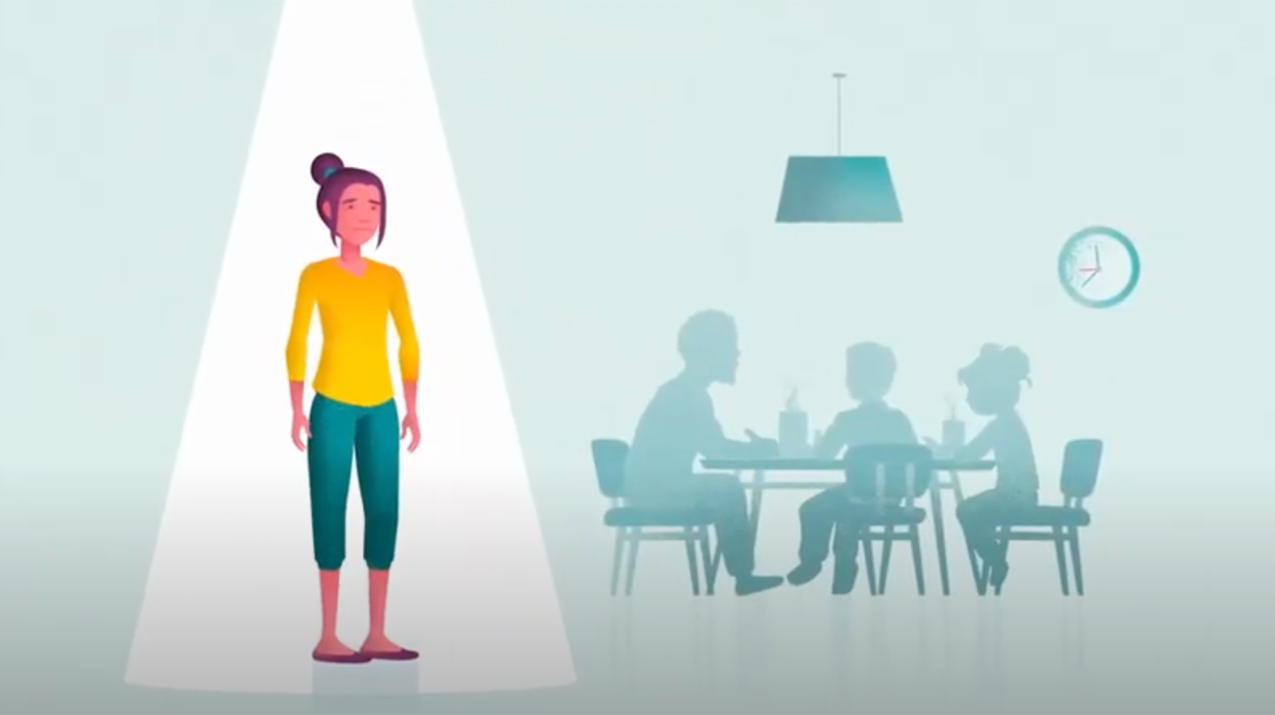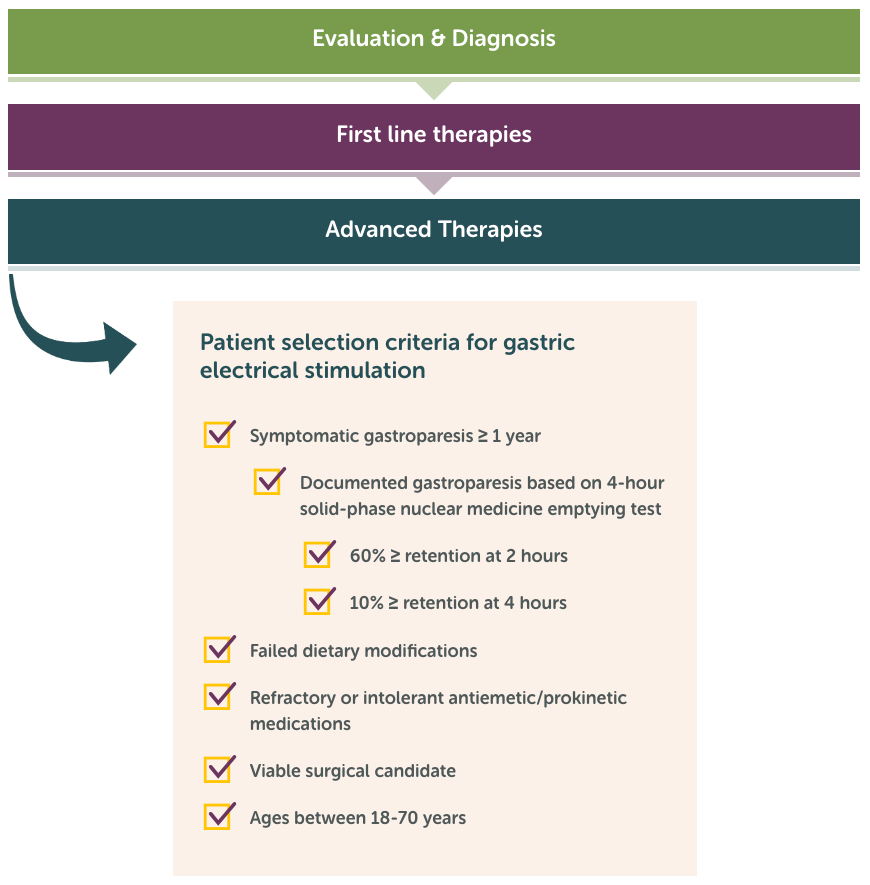Patient selection & referral
Recommending the right patients for Enterra® Therapy
Enterra Therapy, the only device designed to reduce nausea and vomiting symptoms associated with gastroparesis, may be appropriate for patients who:
- Have gastroparesis caused by diabetic or idiopathic origin
- Have difficulty managing nausea and vomiting symptoms, despite having tried first-line therapies of diet modification and medications
- Are 18-70 of age
Referring your gastroparesis patients to an implanting physician is a 3-STEP process.
STEP 1
Educate
Educate your patients about gastroparesis symptoms, diagnosis, and treatment options.
STEP 2
Recommend
If you think your patient may be a candidate for GES, recommend that they consult with a specialist.
IMPORTANT SAFETY INFORMATION
Enterra Therapy for treatment of chronic, resistant to medication nausea and vomiting associated with gastroparesis caused by diabetes or an unknown origin in patients aged 18 to 70 years: patients should always discuss potential risks and benefits of the device with their physician.
HUMANITARIAN DEVICE
Authorized by Federal law for use in the treatment of chronic intractable (drug refractory) nausea and vomiting secondary to gastroparesis of diabetic or idiopathic etiology in patients aged 18 to 70 years. The effectiveness of this device for this use has not been demonstrated. What does this mean?



